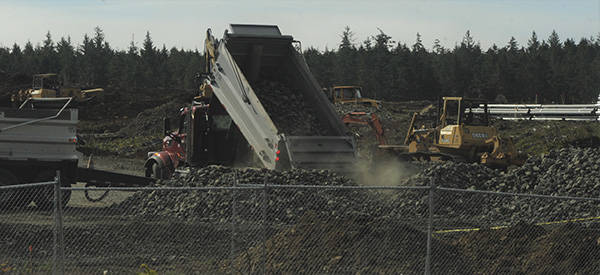Quillayute
Valley
The Quillayute Valley School District staff had spent the summer preparing for in-person education in district facilities, but the rise in COVID-19 case numbers in Clallam County coupled with the recommendation that all county schools begin the year online necessitated a late change.
Last Tuesday, Superintendent Diana Reaume outlined how Forks students will access education when the 2020-21 school year begins Sept. 2 during an online meeting with parents.
Reaume said the Fuel Education platform will be used to teach students in grades K-12.
“It will look very different than the spring remote learning plan,” Reaume said.
The curriculum and assessments are aligned to state standards and allows for face-to-face and in-the-platform learning, she said.
Students will virtually attend scheduled sessions with their teachers. Teachers also will provide office hours.
“It’s flexible for families with multiple children, families who may have older kids who are working,” Reaume said. “It provides multiple ways for students to learn.
Each student in the district will be issued a Chromebook, charging cord and headset.
Internet connectivity will be offered through CenturyLink and wifi hot spots for families who demonstrate the need.
Limited in-person learning opportunities will be provided for highly impacted students such as special education students, or families with no access to the internet.
Breakfast and lunch will be delivered to distribution centers for students enrolled in the district.
More information on the start of school will be provided to families this week by the district, she said.
The district website is at https://www.qvschools.org/Page/9.
Cape Flattery
The Cape Flattery School District had told parents in an Aug. 4 letter that the district would go to a remote learning model when it opened on Sept. 3.
“The district was already in a 1-to-1 technology equipment model,” when the health recommendation was made, said Superintendent Michelle Parkin. “All students had some kind of electronic device.”
By the end of the summer, all teaching staff on both the Neah Bay and Clallam Bay campuses have received a week-long professional development training, learning how to teach online, Parkin said.
Because of community feedback about a need to streamline, the district will use four main platforms, Parkin said.
Connectivity is often poor on the West End, so the district has purchased hot spots for some students.
Others don’t even have cell phone service so other arrangements will have to be made.
Parkin envisions a slow start when the district opens on Sept. 3.
The main focus is to reestablish our relationships with the students and offer them support both in learning the platforms and the new method of instruction as well as social and emotional contact.
Teachers also will work with parents to offer technology support.
The district served last school year 383 students in Neah Bay and 124 in Clallam Bay.
“We know that face-to-face instruction is the best method of educating our children,” Parkin said. But “we are an extended family, so safety really rose to the top.”


